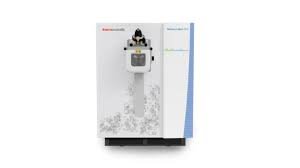Thursday, 13 November 2025
Growing demand for nutraceuticals to drive edible flower market
The edible flowers market is projected to grow from $0.442 billion in 2024 to $0.66 billion by 2032 Greeneration, a company based in Dubai, has recently introduced a new line…

The edible flowers market is projected to grow from $0.442 billion in 2024 to $0.66 billion by 2032
Greeneration, a company based in Dubai, has recently introduced a new line of locally grown premium customisable edible flowers. This offers the HoReCa industry access to high-quality and flavorful ingredients straight from the farm. The fresh lineup includes Wood Sorrel (Oxalis leaves), Shiso Green, Red Shiso, Lemon Verbena, Golden Pea, Huacatay, Balsamina, and Torenia. Each variety is carefully selected for its distinct flavours, textures, and culinary versatility, providing hotels, restaurants, bars, and caterers in the UAE with limitless opportunities for culinary exploration and exceptional dining experiences.
The rising popularity of supplements in the food and beverage industry is driving the market for edible flowers. The increased use of edible flowers as supplements in the nutraceutical, food and beverage, and pharmaceutical industries is the primary driver of the edible flower market. Furthermore, the demand for natural and organic nutraceutical supplements will drive the edible flower market. The rising demand for skin health and anti-ageing supplements is also expected to drive the edible flower market in the future.
Roman Ulyanov, Founder and Managing Partner of Greeneration, mentioned in a media statement, “We were inspired by the cultural significance of these crops in various cuisines around the world. Shiso is very popular in Japan and Korea, Huacatay in Peru, and oxalis in Slavic and North European countries. Our goal is to localize production and increase the quality of these globally beloved ingredients by bringing them closer to home.”
According to Market Research Future, the Edible Flowers Market Size was valued at $0.421 billion in 2022. The edible flowers market is projected to grow from $0.442 billion in 2024 to $0.66 billion by 2032, exhibiting a compound annual growth rate (CAGR) of 5.20 per cent during the forecast period (2024-2032). The increasing popularity of international cuisines and changing consumer eating patterns are primary drivers boosting market growth.
Edible flowers are gaining popularity post-pandemic as people’s health consciousness grows and more information on the health advantages of edible flowers becomes available. These flowers can be added directly and indirectly, enhancing the appearance and nutritional value of the final product. The general public’s support for a nutrient-dense diet has recently increased the popularity of edible flowers in food and beverages. For instance, Etlingera elatior is cooked with boiled flowers and served hot with peanut sauce in places like Indonesia. These novel forms are expanding the menus of worldwide hotels, forecasting a strong growth trajectory for the edible flower market during the projection period. Edible flowers flavour salads, sweets, and bakery products like cakes and cookies. The increasing use of edible flowers for garnishing and flavouring food is likely to drive the target market’s growth. These flowers are also useful for improving skin texture and treating skin disorders such as acne, which is predicted to drive demand for edible flowers. Furthermore, the trend towards a healthier lifestyle is likely to drive the growth of the worldwide edible flower market.
Additionally, the worldwide nutritious food sector is predicted to impact the edible flower market favourably. Rising expenditure on nutraceutical goods and skin rejuvenation supplements is predicted to boost the nutraceutical supplements sector, driving demand for edible flowers. The direct use of edible flowers as food and as ingredients in food items is in demand due to their wide range of applications, including health advantages, use as flavouring agents, and garnishing agents, which are expected to drive the edible flower market forward.
Based on flower type, the edible flower market segmentation includes rose, hibiscus, jasmine, marigold, lavender, pansies, and others. The hibiscus segment dominated the market, accounting for 35 per cent of market revenue, due to the numerous applications of hibiscus, such as in jam, tea, salads, and relishes. Furthermore, hibiscus is well known for its medicinal and culinary purposes. Many people consume hibiscus tea for its therapeutic properties. Several studies show that hibiscus helps lower cholesterol and blood pressure, and more research is being conducted to better understand the effects of hibiscus on heart health. Hibiscus is considered to have a cooling effect, making it ideal for hot weather. Several hibiscus species exist, but the most common edible variant is Hibiscus sabdariffa or roselle.
Customers’ dining habits are evolving, and international cuisines are becoming more popular. Furthermore, these flowers have numerous health benefits as they are high in vitamins E, A, and C, among others. Several edible flowers are abundant in antioxidants and iron, aiding in cell damage prevention and digestion. Edible flowers are used to flavour a variety of sweets, salads, and bakery products such as cookies and cakes. The growing use of edible flowers to enhance flavour and adorn meals is expected to drive growth in the worldwide edible flower industry.
Shraddha Warde
shraddha.warde@mmactiv.com
Technology
MENU ORDER AI to launch app aimed at GLP-1 users and health-conscious diners
Nov 10, 2025 | Company News
Harnessing Quantum AI for Greener Minds and Healthier Futures
Nov 10, 2025 | Interaction
Intertek acquires Costa Rican testing business Suplilab
Nov 07, 2025 | Company News
Food Testing
Intertek acquires Costa Rican testing business Suplilab
Nov 07, 2025 | Company News
Thermo Fisher Scientific launches Orbitrap mass detector for food safety testing
Oct 24, 2025 | Company News
ADM advances quality capabilities with opening of new Central Milling Laboratory
Oct 16, 2025 | Company News
More Popular
HEINEKEN opens new brewery in Brazil
Nov 12, 2025 | Beverages
Remilk and Gad Dairies introduce The New Milk in Israel
Nov 12, 2025 | Beverages
Ochre Spirits closes seed round led by Ah! Ventures to build next-gen beverage house
Nov 12, 2025 | Beverages





